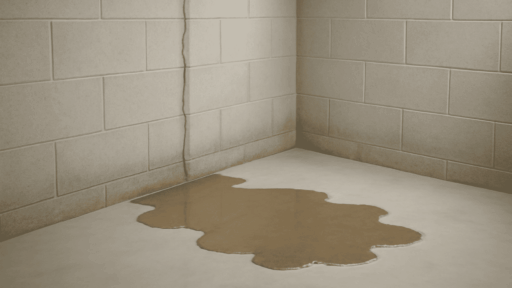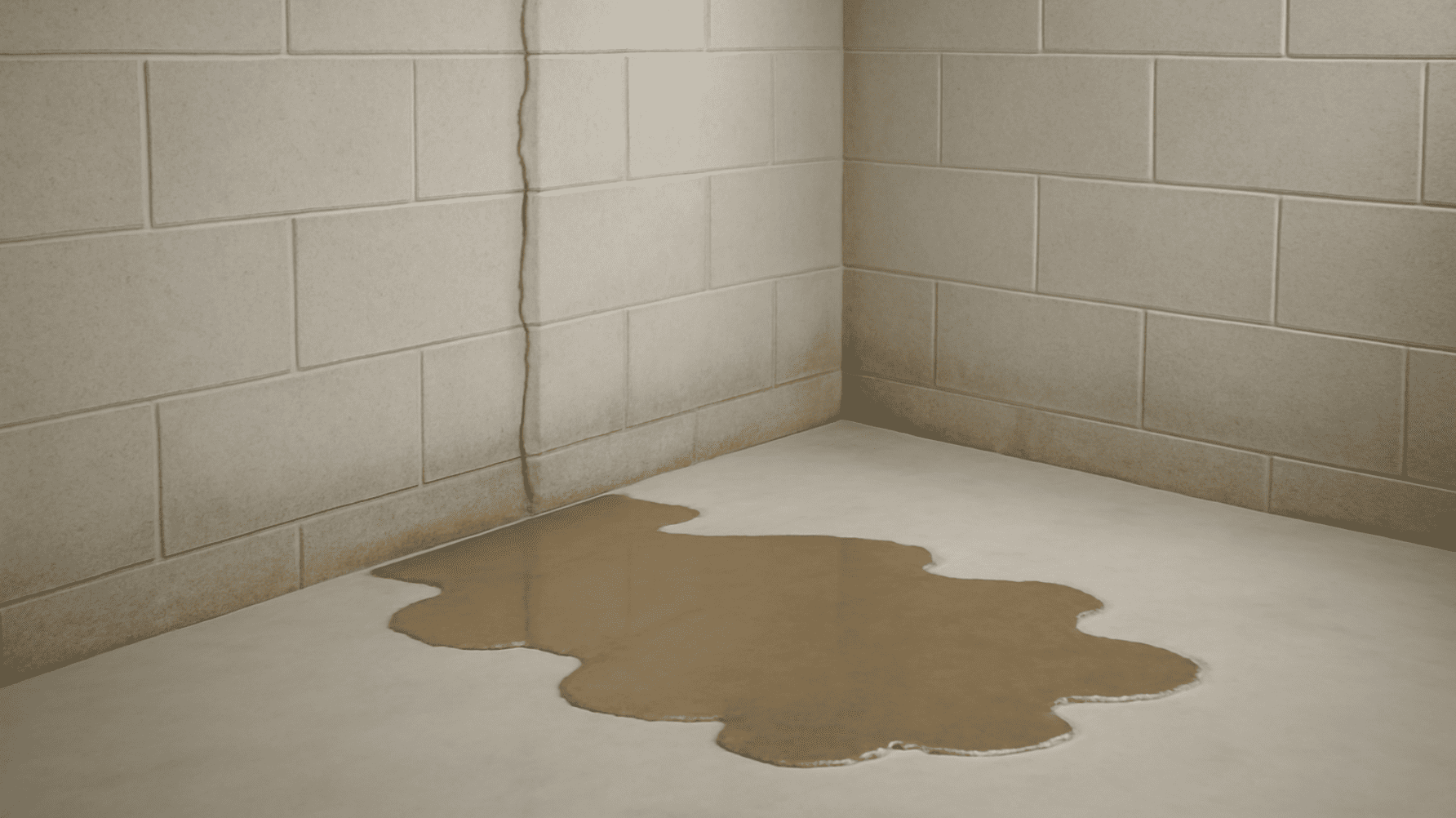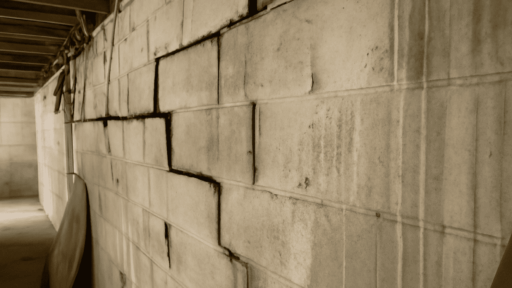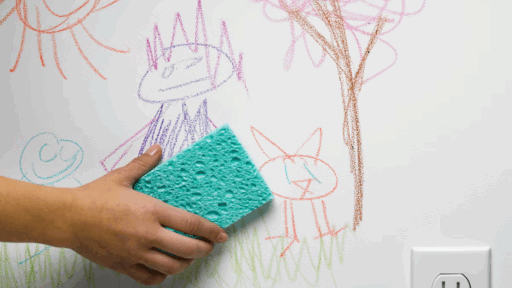That sinking feeling when you find out water is leaking in your basement is something no homeowner wants to experience.
Whether it’s a small puddle or standing water, basement leaks can quickly turn from a minor annoyance into a major headache.
You’re not alone in this struggle; millions of homeowners face basement water problems every year.
The good news?
Most causes of water leaking in your basement can be identified and fixed without breaking the bank.
We explain why water enters basements, how to spot warning signs early, and steps to fix the problem permanently.
Don’t let basement leaks dampen your spirits, and find effective solutions!
Why Is Water Leaking Into Your Basement?

Finding water in your basement can be alarming and frustrating.
Understanding why water is entering your space is the first step toward solving the problem.
Water can enter through several pathways, and identifying the specific cause will help you implement the right solution to keep your basement dry.
1. Foundation Cracks
Foundation cracks are common entry points for water in basements.
As houses settle over time, small cracks form in concrete walls and floors.
These openings allow water from saturated soil to push through when it rains heavily.
Even hairline cracks can let in surprising amounts of water.
The water follows the path of least resistance, making these cracks perfect channels for moisture to enter your home.
2. Poor Drainage Around the Foundation
When rain flows toward your house instead of away from it, trouble follows.
Yards that slope toward the foundation or gutters that dump water near the house create pools of water against basement walls.
This water pressure eventually forces moisture through any weak spots.
Clogged gutters can also overflow, causing water to splash down directly beside your foundation, creating the same problem.
3. Sump Pump Failure
Your sump pump works hard to remove water that collects around your foundation.
When it fails, water quickly builds up in the sump pit and can overflow into your basement.
Common causes of failure include power outages, stuck switches, or pumps that are too old or small for the job.
Regular maintenance helps prevent these unexpected breakdowns.
4. Leaky Window Wells
Basement window wells act like buckets when drainage is poor.
They collect rainwater, snow, and runoff that can seep around window frames and into your basement.
Without proper covers or drainage systems, window wells fill up during heavy rains.
The pressure forces water through small gaps around windows, leading to wet walls and floors inside your basement.
5. High Water Table
The water table is the underground level at which the soil is fully saturated with water.
During rainy seasons or in naturally wet areas, this level rises and can reach your basement floor.
This creates hydrostatic pressure that pushes water up through floor cracks or where walls meet the floor.
Homes built in low-lying areas are more prone to this problem, especially during periods of heavy rainfall.
Signs You Have a Water Leak in Your Basement
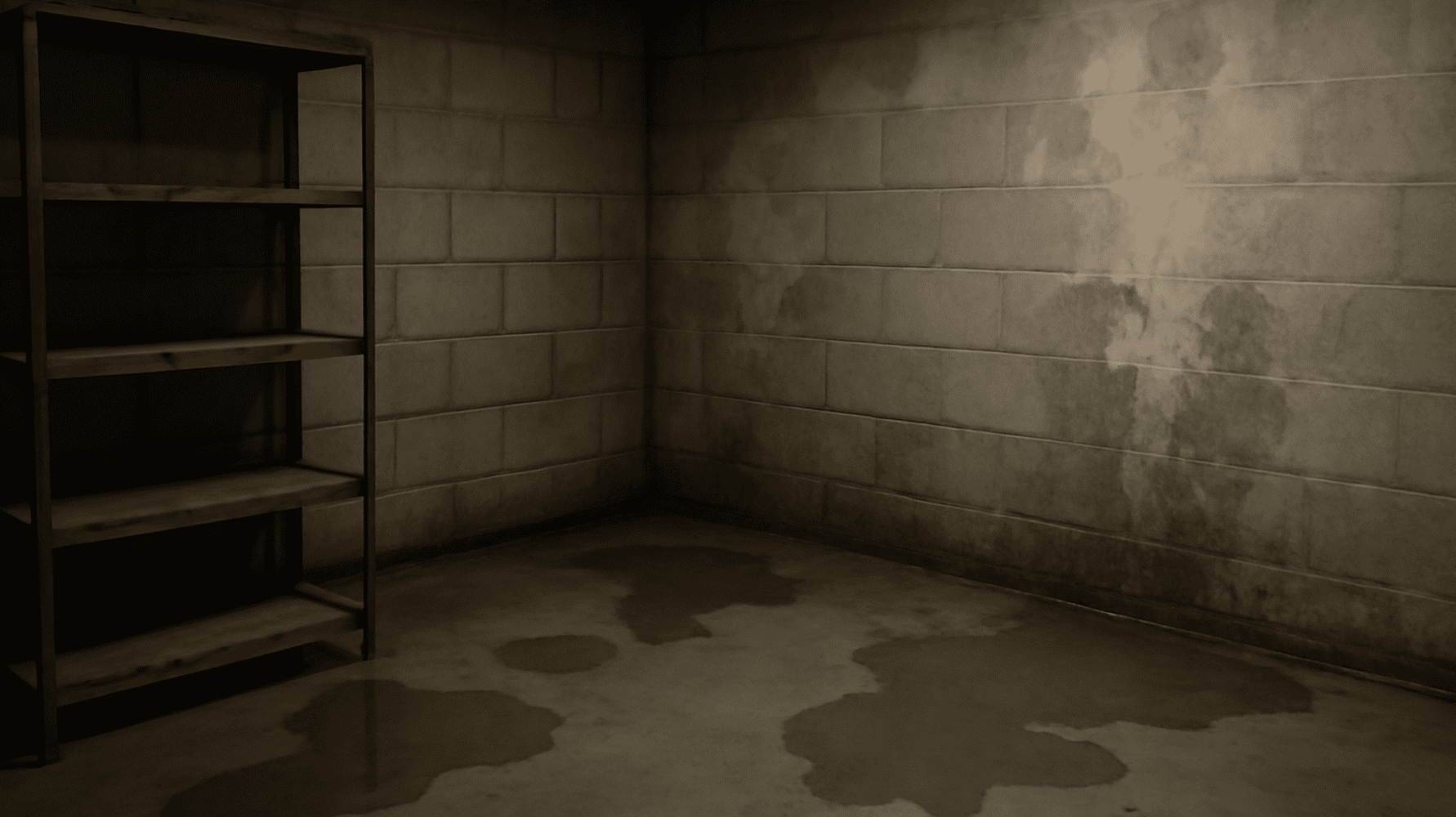
Water leaks don’t always announce themselves with obvious flooding.
Sometimes the signs are subtle and easy to miss.
Being able to spot these early warning signs can help you address problems before they cause serious damage to your home.
- Water puddles or wet spots on your basement floor, especially after rain.
- Damp, musty smells that persist even after cleaning.
- White, chalky stains on concrete walls (called efflorescence).
- Paint peeling or bubbling on walls due to moisture behind them.
- Rust forming on metal objects or appliances in your basement.
Don’t ignore these warning signs.
Even small leaks can lead to big problems over time, including structural damage and health hazards from mold.
If you notice any of these signs, it’s best to examine the source of moisture promptly and address it before the problem worsens.
What Happens If You Don’t Address Basement Water Leaks
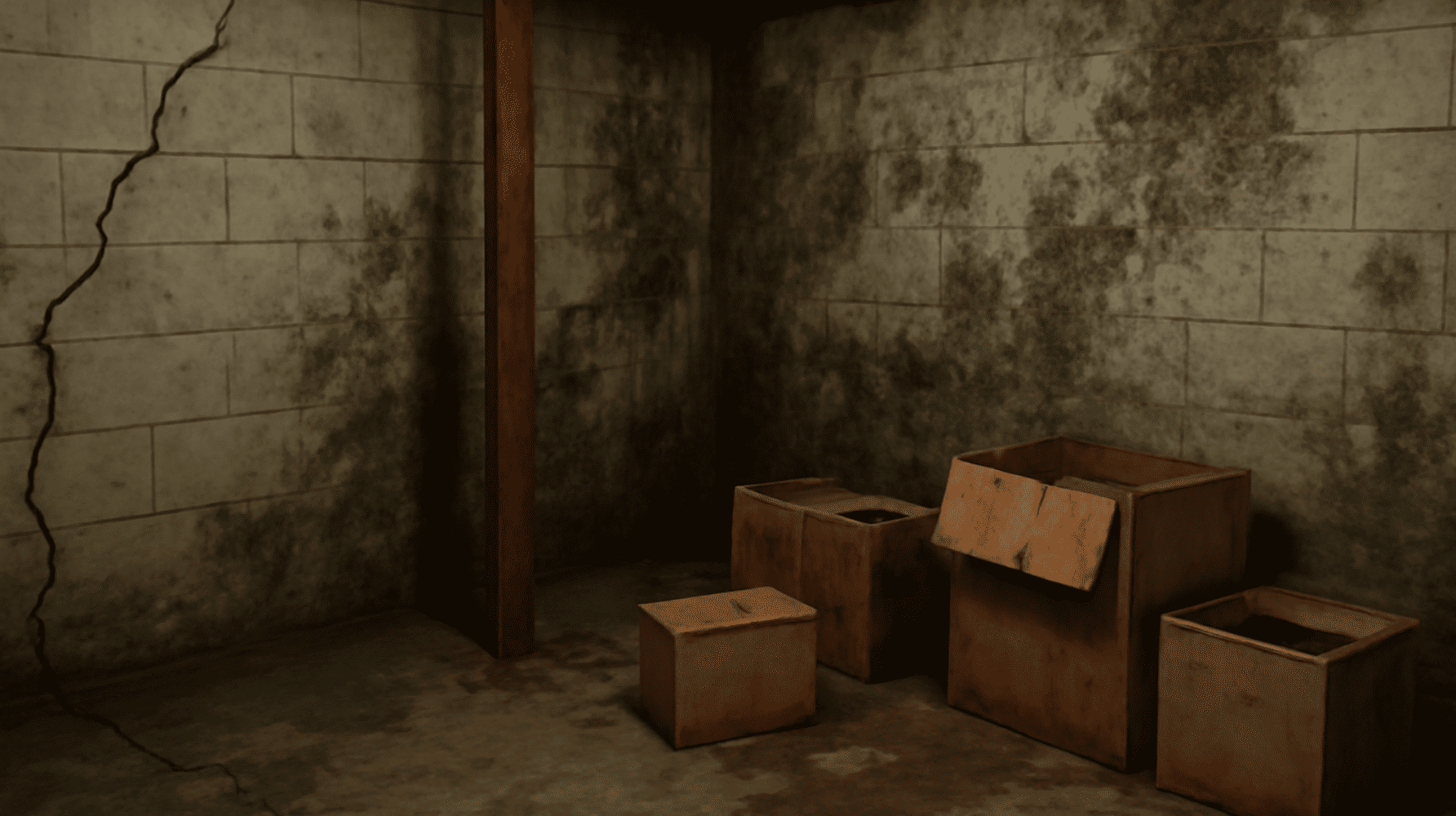
Ignoring water leaks in your basement is like ignoring a small hole in a boat – eventually, the problem will sink you.
Water that continually seeps in will slowly weaken your home’s foundation, allowing cracks to grow larger.
The constant moisture can rot wooden support beams and rust metal parts, putting your whole house at risk.
Damp basements provide ideal conditions for mold and mildew to thrive.
These can trigger allergies, breathing problems, and other health issues, especially in children and older adults.
Your belongings stored in the basement can be damaged by water.
When it’s time to sell your home, water problems can lower your property value.
Fixing major water damage costs much more than addressing small leaks early.
Additionally, wet basements are more difficult to heat and cool, resulting in higher energy bills each month.
How to Fix Water Leaks in Your Basement
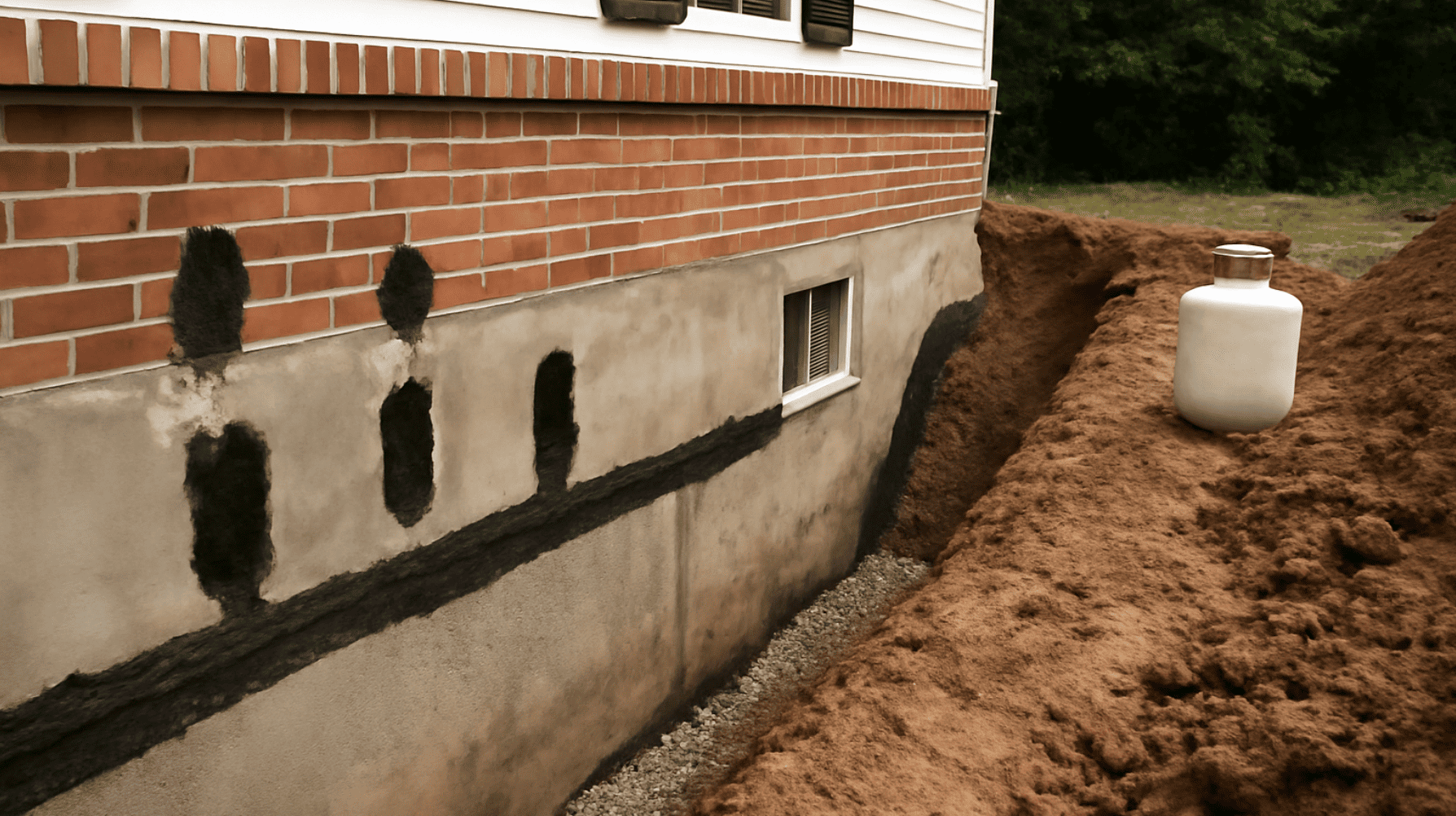
Uncovering water in your basement can be alarming, but there are several effective solutions to address the issue.
The right fix depends on what’s causing the leak.
Homeowners with basic tools can complete most solutions, while others may require professional assistance.
Here are some effective ways to stop water from entering your basement.
1. Improve Drainage Around Your Home
Make sure the ground around your house slopes away from the foundation.
Add soil near your house to create a gentle downward slope.
Clean your gutters at least twice a year to prevent overflow.
Extend downspouts at least 6 feet from your foundation to carry water away.
Consider adding a rain barrel to collect water or installing underground drain pipes for better water management.
2. Fix or Replace Sump Pumps
Test your sump pump by pouring water into the pit; it should turn on and pump the water out.
Clean the pump and pit yearly by removing debris.
Make sure the float switch moves freely.
Install a battery backup system to protect against power outages.
If your pump is over 7 years old or runs constantly, consider replacing it with a newer, more powerful model.
3. Waterproof Your Basement
Interior waterproofing includes applying special paints or sealants to walls and installing drainage channels along the floor.
Exterior methods involve digging around the foundation to apply waterproof coatings and drainage boards.
For minor issues, hydraulic cement can seal cracks.
More serious problems might need a drainage system that collects water and directs it to a sump pump.
Select the method that best suits your problem and budget.
4. Install Window Well Covers
Clear any debris from your window wells first.
Purchase clear plastic covers that fit over the wells while still letting light through.
Make sure the covers have vents to prevent condensation.
Secure them tightly to prevent them from blowing off in storms.
For better drainage, add gravel at the bottom of the well or install a small drain pipe connected to your home’s drainage system.
Preventing Future Water Leaks
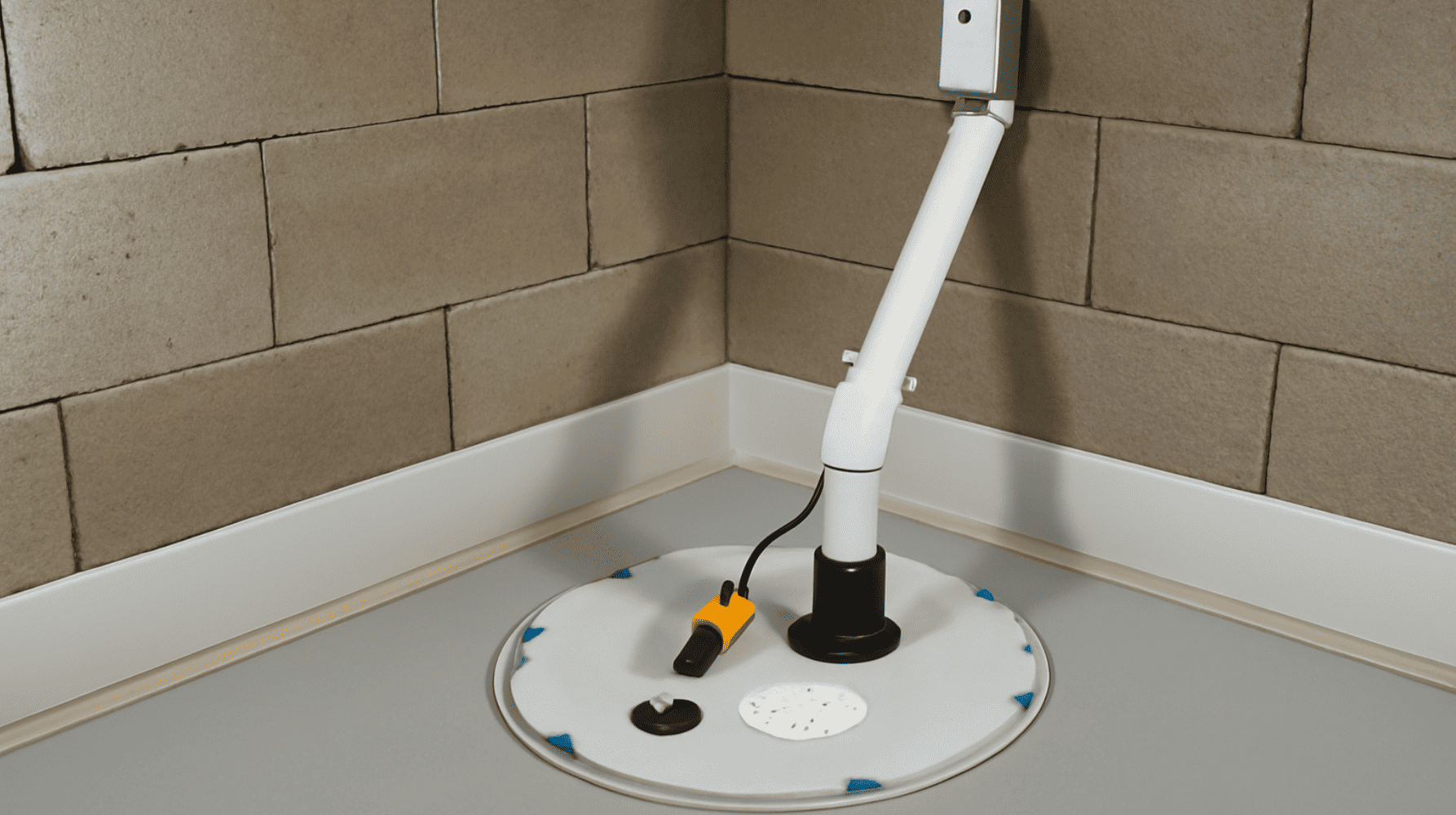
Stopping water problems before they start is easier and cheaper than fixing damage later.
A few simple habits and home improvements can keep your basement dry for years to come.
Here are some practical ways to prevent water from entering your basement:
- Inspect basement walls and floors for new cracks each season.
- Clean gutters twice yearly to prevent overflow near your foundation.
- Test your sump pump every three months by adding water to the pit.
- Maintain ground sloping away from your house by adding soil when needed.
- Run a dehumidifier during humid months to keep moisture below 50%.
- Apply waterproof sealer to basement walls every few years.
Remember that preventing water leaks is an ongoing process, not a one-time fix.
Regularly taking these steps will protect your home from water damage and keep your basement dry year-round.
Summing It Up
Finding water leaking in your basement doesn’t have to mean disaster for your home or wallet.
By understanding common causes, you can spot early warning signs.
Taking quick action protects your home from serious damage.
Remember that prevention is always easier and cheaper than fixing major water damage.
Make basement checks part of your regular home maintenance routine.
This is especially important after heavy rains.
Some problems may seem too big to handle on your own.
Don’t hesitate to call in professionals when needed.
The cost of their expertise now could save you thousands in repairs later.
With the right approach, you can fix your leaky basement.
Turn that damp space into a dry, usable area.
A dry basement adds value to your home, rather than adding worry to your life.
Uncover how to permanently stop basement leaks.
Check out our blogs in home maintenance section for smart solutions to protect your home.

